Matador Network's Blog, page 861
May 12, 2020
NASA captured California's poppies

Every spring, locals and travelers flock to the Antelope Valley California Poppy Reserve to marvel at the blooming sea of wildflowers, most well-known for the bright orange poppy. Creating a stark contrast between its vibrant petals and the earthy tones of the surrounding land, the poppy blossoms are truly a sight to be admired. Since this year nature-lovers can’t physically visit the poppies, NASA’s Armstrong Flight Research Center — the park’s next-door neighbor — captured and shared satellite images of the spectacle.

Photo: NASA
On April 14, the Operational Land Imager on the Landsat 8 satellite was able to capture the delicate movement of the poppy petals in a series of stunning photos. The poppy actively responds to weather conditions such as sun, wind, and rain. With the rain in Southern California exceeding expectations by four inches this year between March and April, the 2020 bloom appears even more vibrant and is expected to last longer than usual.

Photo: Scott Sporleder
Although the poppies have been drawing in visitors, the park is also abundant in purple bush lupines, forget-me-nots, cream cups, and yellowray goldfields.
To watch the bloom from home, you can tune in to the Antelope Valley California Reserve live cam or go on a seven-minute guided virtual tour led by State Park Interpreter Jean Rhyne. 
More like this News The California poppies are blooming, safe from the trampling of Instagrammers
The post California’s poppy bloom is so bright it can be seen from space appeared first on Matador Network.

May 11, 2020
Future of air travel

No one can look ahead to the post-pandemic world and claim to know what it will look like. There are, however, two certainties: People will be eager to travel again, and travel itself will be very different for quite some time. Exactly what the airport experience will look like is anyone’s guess, but we already have some clues. Airports and airlines know that the only way to get people traveling again is to reassure them that the experience will be safe. The only way to do that is by completely overhauling sanitation measures, both onboard flights and in the airports themselves. The result is likely to be a completely changed airport experience designed to dramatically reduce the number of passenger touchpoints.
Flight check-ins, usually a fairly automatic, mindless process, will have to be completely reimagined. Whether it’s checking in at the desk with a human being or using a kiosk, these are touchpoints that present a serious sanitation risk. That’s why the World Travel and Tourism Council is reporting that major airports like JFK, Heathrow, and Singapore Changi will probably include mostly online check-in. All-biometric check-in systems will likely become ubiquitous across many major airports, as well as methods for bag checking that don’t involve airport staff. This could also involve a UV disinfection tunnel for the luggage itself after it’s dropped off.
Indeed, some airports have already introduced new disinfection methods. According to The Telegraph, “it may sound futuristic, but UV sanitation is likely to become commonplace at the world’s airports. London Heathrow says it is to begin trialing the process for its security trays.”
More important than disinfecting luggage and belongings, however, will be making sure that passengers themselves are healthy. Airports can be expected to install hand sanitation stations and even thermal scanning to check crowds for fever-grade temperatures. Hong Kong International Airport is testing a full-body disinfection booth developed by Cleantech, which would sanitize passengers with an antimicrobial coating that can remotely kill germs. It’s also using cleaning robots to disinfect public areas.
Much like check-in, the boarding process will also likely become touchless. Facial recognition software is already being used in some US airports for international flights, and many airlines have introduced strict new sanitation measures.
In the aircraft, electrostatic spraying of cabins, blocked middle seats, and protective equipment for the cabin crew will likely be commonplace, while a growing number of airlines are now requiring passengers and crew to wear masks.
Air Canada recently introduced an initiative called Cleancare+, including new cleaning protocols for aircraft and mandatory temperature checks for all passengers before flights. Perhaps even more reassuring, the airline guarantees that it will not sell the seat directly behind you.
Samuel Elfassy, VP of safety at Air Canada, expressed optimism about the situation to Bloomberg. “This creates incredible opportunity for innovation,” he said. “The post-pandemic world will include screening technologies that detect vital signs and provide a better understanding of what an individual’s health looks like, and whether or not that person should be flying.”
Airlines are also getting the word out about their HEPA air filters — an air filtration system used by all airlines. The system removes impurities from the air, making plane cabins one of the safest places for you to inhale. According to the EPA, HEPA filters catch “at least 99.97 percent of dust, pollen, mold, bacteria, and any airborne particles.” It’s a common misconception that airplane air is circulated throughout the cabin, so you’re constantly breathing in other people’s germs. Because HEPA filters the air every three minutes, however, the vast majority of contaminants are removed. Dispelling the myth about airplane air, and educating passengers about HEPA filters, will be crucial to restoring confidence in air travel.
Upon arrival, passengers can expect to undergo some kind of health check, whether it’s a temperature screening, a blood test, or even being asked to present proof of immunity or vaccination. In Hong Kong and Vienna, international passengers are already being given blood tests before being allowed to enter the country, and in Dubai passengers receive blood tests before departing.
Just because travel is changing, that doesn’t mean it’s all for the worse. With heightened sanitation measures comes more peace of mind and less anxiety about passing through the airport. Jon Ostrower, editor-in-chief of The Air Current, told The Harvard Business Review, “I think all of these changes will be positive from a passenger’s point of view. But on the flip side, I suspect flying may become more boring for a while, as airlines try to recover financially.” 

More like this: What are airplane HEPA filters and do they make cabin air safe?
The post The future of air travel is uncertain, but here’s what it might look like appeared first on Matador Network.
Dunkin’ Donuts stops using Styrofoam

Dunkin’ Donuts, welcome to the 21st century.
While seemingly every other quick-service national food chain did away with polystyrene foam — or Styrofoam, the brand name most people call it — Dunkin’ held fast to its white-foam roots. The stuff kept coffee hot and our hands cool, and by gosh it somehow made that cup of coffee, cream, and all the sugars they put in your Xtra Large coffee taste… like Dunkin’.
But this week Dunkin’ finally announced it will be 100 percent free from polystyrene foam cups as soon as current supplies run out. The foam cup kings have switched to a double-walled paper cup made from paperboard that’s certified to the Sustainable Forestry Initiative Standard. Dunkin’ says it will have the same temperature-regulating properties as the old foam cups.
The move is expected to remove a billion polystyrene cups from landfills annually. Considering it took the average Dunkin’ cup 50 years to biodegrade, that’s a pretty huge number.
“Sustainability remains a key priority for Dunkin’’,” Scott Murphy, Dunkin’s America’s president, said in a press release. “We will build on our momentum and do our part to take care of the world around us because it matters to us, our franchisees, our guests, and our communities.”
In addition to eliminating foam cups, Dunkin’ is moving to fully recyclable coffee cup lids as well, replacing the old polystyrene ones with #5 polypropylene. These lids can be recycled in any city that offers #5 recycling. Combined with the new cups, Dunkin’ is expecting to remove 19 million pounds of polystyrene waste from landfills every year.
You may still get a foam cup next time you run in for coffee since many franchisees still have existing boxes of the old cups they’re not in a position to throw away. But Dunkin’ distribution centers will no longer be sending them out, so if for some reason you enjoy the flavor of coffee in a cup that’ll still be here in 2070, you should probably act now.
Hopefully, the move signifies more restaurants are moving away from environmentally harmful packaging, especially as consumption of takeout and delivery foods has become the norm over the past couple of months. Dunkin’ is finally doing its part to help reduce waste in landfills, and America can run on it feeling a little less guilty. 

More like this: The 8 most amazing, sustainable restaurants in the world
The post Dunkin’ Donuts finally replaced its foam cups for more sustainable paper ones appeared first on Matador Network.
Notes from the Apocalypse book
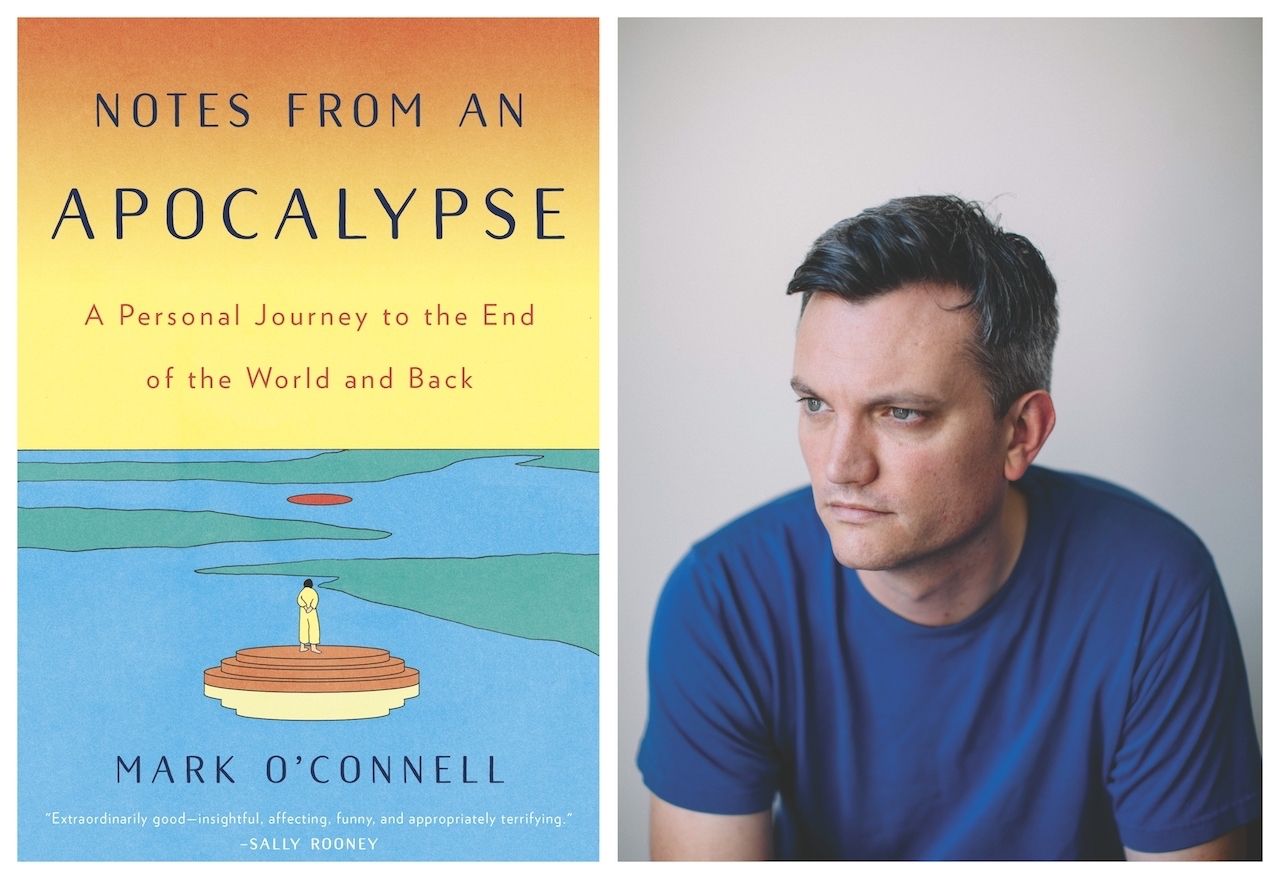
Mark O’Connell is obsessed with the end of the world. He can’t stop thinking about the ways that humans fantasize about the end times — with their bunkers, and zombie movies, and tours of places that have already been touched by their own kind apocalypse. So he decided to go looking for it — the end of the world, that is. As O’Connell finds out in his new book, Notes from the Apocalypse, he’s not the only one preparing for the worst.
On Youtube, O’Connell dives head first into the world of self-professed doomsday preppers — a group of mostly white men who actively prepare for the collapse of civilization by transforming themselves into survivalists. In Los Angeles, O’Connell attends a conference focused on how to build a human settlement on Mars. He even tours luxury bunkers in South Dakota.
O’Connell seems inclined to chase down apocalypse obsessives who prove that humanity might be doomed after all, but his journey only reinforced that he wanted to find the good in the world — rather than just highlighting the bad.
“I was trying to break through the hard carapace of cynicism that had grown around me,” O’Connell tells me. “I am a little cynical, but I don’t think it’s a particularly useful tool to bring to writing. What’s interesting is the effort to get beyond it.”
Getting beyond cynicism turned out to be a tricky proposition. O’Connell says he did “a lot of flinching,” while writing the book — that indeed, “the whole book, in a way, is an extended exploration of what it’s like to be constantly flinching, while also trying not to look away.” But to understand how humanity responds to panic and chaos, O’Connell forced himself to stare down every worst-case scenario for the end times (which included a trip to Chernobyl that he “wouldn’t recommend as an experience”). And what he found should be reassuring, especially since the onslaught of the COVID-19 pandemic.
“People — whole populations — are acting out of communal self-interest in a way that I haven’t seen in my lifetime. This virus is doing a lot of damage to a lot of good things, but it’s also causing, I think, irreparable damage to the idea of humans as isolated individuals pursuing their own self-interest. And that’s something that gives me hope, albeit tentatively, for the future,” he says.
To some readers, the pandemic might have ushered in the apocalypse O’Connell is searching for, but he’s not entirely convinced. Some humans might wring their hands about our chance of survival if the planet decides we’re no longer welcome while others would rightfully argue that — depending on their religion, the color of their skin, or where they grew up — the apocalypse has already come and gone. As it turns out, the end of the world is relative.
“I’m trying to write about apocalyptic anxiety while keeping in mind that it’s both always the end of the world, and never actually the end of the world,” says O’Connell. “When privileged people in the privileged countries of the world talk about ‘the apocalypse,’ we’re mostly talking about having to live in a way that a large part of the world already lives.”
That sentiment might help some people appreciate how good they’ve got it in a time when people are losing entire livelihoods and loved ones, but it doesn’t change the fact that while we’re stuck inside, many of us are contemplating how different the world will look when businesses and workspaces open up again. Will the world we enter be one we even recognize? And how can we support the people who lost jobs and family members in this new world order?
There are no clear-cut answers. Yet watching as communities come together to support their neighbors who face food and housing insecurity, whether that means cooking meals for each other or launching funding efforts for struggling small businesses, might bolster your spirits. In between dire glimpses of people content to hide away in their concrete bomb shelters or shoot themselves to Mars as society crumbles, O’Connell sees even more people stepping up — proof that humans are still capable of the acts of decency required to ensure that we survive the apocalypse.
“One of the major strands running through the book has to do with the belief that civilization is extremely fragile, and that people will inevitably revert to savagery given a serious enough disaster,” says O’Connell. “Something that’s been very striking to me is that people are overwhelmingly behaving with great restraint and respect, and with a sense of a shared purpose. Community, in other words, is holding strong in a way that so many of the apocalyptic obsessives in my book would not have predicted.”
So that’s one cause for celebration in a time of unprecedented anxiety, grief, and despair. It’s tempting, of course, to give in to feelings of total despondency — especially if you’re someone who was laid off the job that supported your family, or you spent your life working toward opening a small business that is now floundering. There are good reasons for the bleak outlook that seems to consume all our days.
Yet O’Connell’s book, which does highlight some of the people who think the worst is yet to come, is, at its heart, an homage to what our world still has to offer. There’s no reason to give up on this planet or its people, to abandon it when times get tough. There is still so much of it to see, to explore, to celebrate.
“I want my writing to communicate, amid all the darkness and uncertainty and injustice, that the world is an interesting place,” he says. “The world is a beautiful, fascinating place, full of strange and wonderful things, and to ignore that in favour of obsessing about the apocalypse is to be complicit with disaster.” 

More like this: 20 books we can’t wait to read in 2020
The post Why there’s still hope for humanity, according to the author of ‘Notes from the Apocalypse’ appeared first on Matador Network.
Wisconsin’s Lake Country guide
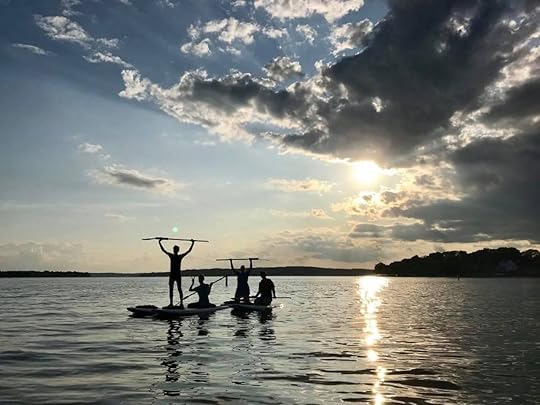
Wisconsin has an astounding 15,000 lakes scattered throughout the state, and no visit to this low-key Midwestern region would be complete without a detour to Wisconsin’s Lake Country in Waukesha County. Situated just 30 minutes outside of the state’s largest city, Milwaukee, and only an hour from the capital, Madison, Lake Country is home to over 250 lakes. With so many lakes to choose from, picking the right ones to visit on a day trip from Milwaukee can be overwhelming. Each has its own personality, from the humble motor-free fishing lakes to the summertime resorts.
In the early 1900s, this region was a weekend getaway hotspot for the wealthy elite from Milwaukee and Chicago. Today, Wisconsinites and out-of-towners from all over the world can find a slice of lakefront paradise in Lake Country, thanks to the numerous public access beaches and state parks in the region. For the best lakes to visit outside of Milwaukee, look no further than these four Lake Country destinations.
1. Lac La Belle

Photo: The Club at Lac La Belle/Facebook
Lac La Belle, which in French literally translates to “lake the beautiful,” lives up to its name. With four beaches to choose from, Lac La Belle is an ideal spot for summertime sunshine. The popular City Beach is a hub of activity from Memorial Day in May to Labor Day in September, with swimming, boat rentals, picnic areas, a playground, sand volleyball, and more. City Beach also hosts events and performances all summer long in the bandshell, including the free weekly Friday night concert series Bands at the Beach.
When it’s time to eat, head over to Buddy’s Beach Bungalow for a brat (Wisconsin bratwurst) and ice cream. Buddy’s also offers full- and half-day pontoon rentals, which are perfect for exploring the lake with a group of family or friends.
Whether you are visiting Lac La Belle at City Beach or at one of the other public beaches like Bender Beach, note that you will need to purchase a beach band from the guardhouse ($2.50 for residents and $5 for non-residents).
If you’re there in a cooler time of year, you can still enjoy lake views while cycling along a bike path around that circles Lac La Belle through the town of Oconomowoc. Bike rentals, along with kayaks and paddleboards, are available at nearby Moboevo. Another option is a round of golf at one of the oldest golf courses in America. The historic Club at Lac La Belle was opened in 1896 and offers afternoon tee-times for non-members.
2. Pewaukee Lake
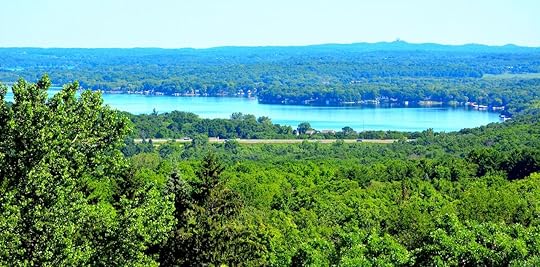
Photo: Tony Savino/Shutterstock
The longest lake in the region is Pewaukee Lake, measuring five miles long and a mile wide. Pewaukee hosts national regattas during the sailing season from spring to fall and is a popular destination for yachters from around the country. Pewaukee is also one of the best fishing lakes in Wisconsin, and you can find muskies, Wisconsin’s official state fish, measuring over 50 inches long. Beachside Boat and Bait rents pontoons, fishing boats, and kayaks, and sells bait and equipment to help you create your own fisherman’s tale experience.
If you’re neither a boater nor a fisher, you can still get on the lake or exercise on its shores. Koha Yoga offers stand-up paddleboard lessons and rentals, as well as yoga sessions, on Pewaukee Lake. You can also rent bikes at VeloCity Cycling and grab a bite to eat after your ride at the on-site restaurant and pub, The Handle Bar.
The beach at Lakefront Park is best for swimming, lounging on the sand, and strolling the boardwalk. Grab lunch at The Chocolate Factory, which despite the name also sells savory sandwiches, and Artisan 179. Then return to Lakefront Park to while away the afternoon. With westward-facing views over Pewaukee Lake, the park is a fantastic spot for viewing the sunset.
Several local gastro-pubs surround the lake, including the four-generation, family-owned 5 O’Clock Club where you can order an award-winning fish fry in a restaurant that looks more like a vacation home with views of the lake. On the northern side of Pewaukee Lake, Doc’s Dry Dock serves up delicious pizzas and beers right on the water, with a boat dock beckoning in hungry boaters off the water.
3. Nagawicka Lake
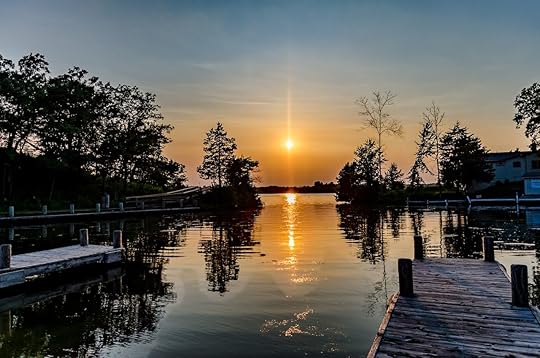
Photo: WillWight/Shutterstock
Nagawicka Lake is nearby to Pewaukee Lake but is smaller and has a completely different feel. While many lakes in the region cater to summer travel, Nagawicka Lake is popular year-round. In winter, Nagawicka Lake is popular for ice fishing, thanks to the lake’s deep freeze and trophy-sized walleye and northern pike.
It’s also great for angling in every other season and is considered one of the best fishing lakes in south-central Wisconsin — teeming with Largemouth bass, smallmouth bass, crappie, perch, and bluegill. Whatever time of year you go, if you aren’t catching your own dinner, Seven Seas Seafood and Steak and Fishbone’s Cajun and Creole Restaurant are two popular lake-view options.
Naga-Waukee Park is the best place to access Nagawicka Lake, with spectacular views from the boardwalk, family-friendly beaches, concessions, and a boat launch. The Ice Age National Scenic Trail also passes through Naga-Waukee Park since the topography of the lakes region is the result of glacial melt from the last Ice Age 15,000 years ago. Whether hiking on the Ice Age trail, or any of the other trails through the park’s oak and hickory forests, be on the lookout for orioles and great-horned owls in the treetops. You can even overnight here right on the lake — just be sure to reserve a campsite ahead of time.
4. Lake Nemahbin
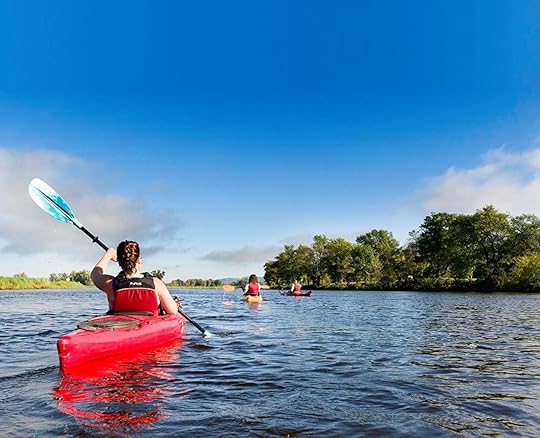
Photo: Nomad Boardsports/Facebook
Divided into Upper and Lower portions, Lake Nemahbin offers visitors sandy beaches, fishing opportunities, and scenic views, particularly over Lower Nemahbin’s Sugar Island. Upper Nemhabin is a fishing favorite, with a variety of species living in the lake, like bluegill, largemouth bass, northern pike, smallmouth bass, and walleye.
While Lake Nemahbin doesn’t have public sandy beaches like some of its neighbors, it is excellent for exploring by boat. Lake Nemahbin connects to several other bodies of water like Bark River and Upper and Lower Nashotah Lakes, making it an exciting place to navigate various waterways. Pontoon, paddleboard, and kayak rentals are available right on the lake from Nomad Board Sports. If you’re new to stand-up paddleboarding, Nomad Board Sports also offers guided and themed paddleboard excursions on the lake.
Water skiers frequently ride on Upper Nemahbin, and visitors can grab a spot to watch the watersports and revelry at popular Panga Bar & Grill, where they can also enjoy a cold Wisconsin beer and traditional fish fry to top off their Lake Country experience. 

More like this: Why you need to visit the incredible lakes near Toronto
The post The best lakes to visit in Wisconsin’s Lake Country appeared first on Matador Network.
Matador Network survey on travel
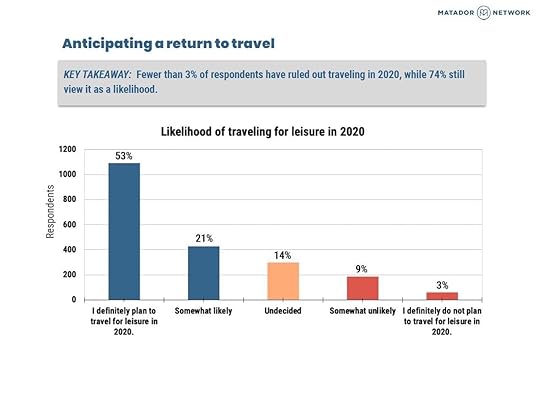
As normal life has been upended by the pandemic, so has travel.
We’ve all been instructed to stay put, international borders are closed, and international flights are very limited, but signs that traveling is very much still on the agenda are showing. Airports and airlines are implementing new sanitation measures to restore peace of mind and make people feel comfortable about flying again, destinations like Greece are readying themselves to welcome visitors this summer, and travelers’ desires to explore the world hasn’t diminished — if anything, they’ve grown stronger.
Matador Network conducted a survey of 2,179 individuals around the world to gauge their thoughts and behaviors toward travel, and the results are shining a light on the future of the industry.
According to the survey, fewer than three percent of respondents have ruled out traveling in 2020 while 74 percent still view it as a likelihood. The study also found that 89 percent of respondents would feel comfortable traveling for leisure within six months of travel being declared safe. Of that 89 percent, 26 percent plan to start traveling within 30 days of the announcement.

Photo: Matador Network
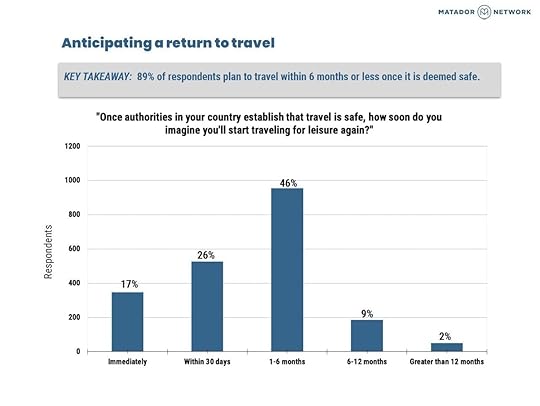
Photo: Matador Network
Even travelers with an elevated risk of infection are planning a speedy return to adventure. Sixty-seven percent of travelers surveyed who consider themselves at elevated risk from COVID-19 said they would travel for leisure at the same rate, or even more, than they used to. This is only a slight decrease from non-elevated risk respondents, 71 percent of whom said they would return to their previous travel habits, or travel even more frequently.
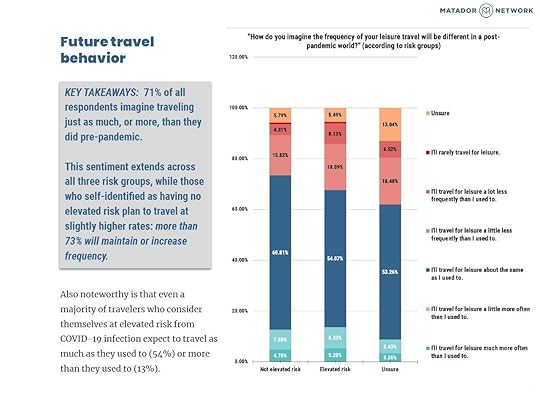
Photo: Matador Network
These numbers suggest that the travel industry’s resurgence will be fueled by an overwhelming restlessness.
“I wasted time making any serious plans to travel. I believed that I would start my plans to be a world drifter in 2020. Then coronavirus happened and now I have been sitting in quarantine wondering why I wasted so much time. Why I didn’t just get out there and go. Once the dust has settled I don’t plan on dilly dallying.”— 26–34 traveler, living outside of North America
While much depends on safety measures, the opening of domestic and international borders and economies, and the trajectory of the virus itself, travelers don’t plan to waste much time once given the all-clear.
For more of the study’s findings, check out the insight report in full. 

More like this: Unfazed by coronavirus fears, cruise bookings are up for 2021
The post Matador Network survey reveals an overwhelming eagerness for post-pandemic travel appeared first on Matador Network.
7 types of Italian pizza

Pizza is loved around the world. There are many American styles with fierce defenders, like New York style and New Haven’s apizza (no, that’s not a typo), which vary from the pies made at the cherished pizza shops of Paris, which are different from the pizza in Buenos Aires. But hands down, the most famous pizza in the world comes from Italy.
Pizza, along with an overwhelming number of pastas, is often the first food people think of when they imagine Italian cuisine. Yet there’s no one Italian pizza. Pizza is a regional food in Italy just like it is in the US, the styles of which range from thin-crust squares to what appears more like fluffy bread with some toppings.
These are the seven classic Italian pizza styles you need to know to fully understand all that pizza can be.
1. Pizza Napoletana

Photo: JustClaudio/Shutterstock
There’s a good chance that this is the pizza most people consider true Italian pizza. Napoletana pizza comes from Naples and has a strict set of production rules: Only wheat flour, yeast, salt, and water can be used for the dough, which is flattened to around three millimeters thick. It’s topped with a sauce of Roma or San Marzano tomatoes, and the cheese has to be actual buffalo milk mozzarella from Italy’s Campania and Lazio regions. The pie is quickly cooked in a hot wood-burning oven to create a fluffy crust that’s just as tasty as the thin, ingredient-laden middle.
This method of production is protected by UNESCO, as well as the Associazione Vera Pizza Napoletana, which works to “promote and protect, in Italy and worldwide, the ‘true Neapolitan pizza.’” You can find some true Neapolitan pizza in the US — just know it’s only legit if it’s certified.
2. Pizza al taglio

Photo: ColorMaker/Shutterstock
A classic style of pizza found in Rome, pizza al taglio means “by the cut. The name references the fact that the rectangular sheet pan pizza is sliced into squares and sold by the weight of the piece. Keep that in mind when ordering a square loaded with toppings, which range from classic rossa (tomato sauce) to potato and cheese to parmesan and fig. Pretty much anything you’re craving can top >al taglio.
These quick, on-the-go snacks are sometimes called by other straightforward names like pizza in teglia (“in the pan”) and pizza al trancio (“by the slice”).
3. Pizza Romana

Photo: Fanfo/Shutterstock
Another pizza style common in Rome, this round pizza has a crust that’s rolled as thin as the center of the pie. Pizza Romana is cooked in an electric oven, making the dough extremely crispy to the point of breaking, not bending, when you try to fold it.
4. Pizza alla pala

Photo: ventdusud/Shutterstock
This pizza is named after the wooden paddle that’s used both for getting it out of the oven and for serving. Pizza alla pala is another style found around Rome. Like pizza Romana, it’s cooked in an electric oven and the crust and the middle are around the same size, but pizza alla pala has a hydrated dough that’s fluffy on the inside rather than rolled thin.
5. Sfincione, or pizza Siciliana

Photo: simona flamigni/Shutterstock
Sfincione is to pizza Napoletana what New York-style pizza is to Chicago’s deep dish. Pizza Siciliana comes from Sicily, as the name implies. It’s characterized by the bread, which is thick and fluffy like focaccia and comes in a round or rectangular shape depending on where it’s purchased. Toppings typically include goat and cow milk cheeses as opposed to Neapolitana’s buffalo mozzarella, as well as a tomato-based sauce and anchovies.
6. Pizza al padellino, or al tegamino

Photo: Hywit Dimyadi/Shutterstock
This pan pizza (padellino means pan) is baked and served in a small pan similar to deep dish pizza in the US. It’s most associated with Turin, though it can be found throughout Italy. The soft bread is topped with many of the same ingredients as the thinner styles, but pan pizza is thicker than the pizzas cooked on a flat surface in a wood-fired or electric oven.
7. Pizza all’Andrea

Photo: Fanfo/Shutterstock
An old, traditional style of pizza that’s closer to focaccia loaded with toppings, rather than the tomato sauce covered pizzas we’re familiar with today. The style comes from Liguria and is topped with ingredients local to the region like olives, sardines, and anchovies. The name for the style comes from the Genovese Admiral Andrea Doria, who lived from the mid-1400s to the mid-1500s and, according to legend, invented this style of pizza himself. Though the original recipe doesn’t call for tomato sauce, tomato-covered versions are common today. 

More like this: Every American pizza style, ranked
The post 7 pizza styles you need to try to understand true Italian pizza appeared first on Matador Network.
Portugal. The Man sending free books

On April 22, Alaska’s Matanuska-Susitna (Mat-Su) Borough School Board voted to remove five classic books from the district’s elective English course curriculums.
High school students in the borough, with a population of just over 100,000 and 19,000 public school students, will no longer see F. Scott Fitzgerald’s The Great Gatsby, Invisible Man by Ralph Ellison, Catch-22 by Joseph Heller, The Things They Carried by Tim O’Brien, and I Know Why the Caged Bird Sings by Maya Angelou on their school curriculum.


Photo: Penguin Random House + Random House
But one prominent voice in the community isn’t having it. Rock band Portugal. The Man, whose members hail from the Mat-Su Borough, expressed outrage over the ban, noting that the five books removed from the local curriculum are staples among high school juniors and seniors across the country. The band posted to its Facebook page on April 29 its own boycott: a boycott of the book ban itself.
The band offers to send a free copy of the books on the list to any parent or student in the borough who wants one. ”We believe this decision is narrow-minded and un-Patriotic, and we are not OK with it,” the band said via Facebook. “Any in Mat-Su who would like a copy of one or all of the books banned by the school district should email the band at sticksandstones@portugaltheman.com.”
Some community members have sided with the band. “To say that those are too harsh or too scary of topics that shouldn’t be in schools is absurd, because then you end up with kids that graduate and have no idea what any experience outside of their own could possibly be,” said Palmer City Council Member Sabrena Combs to CNN.
The band created a logo for their protest and are encouraging community members to freely use it on t-shirts, stickers, and posters. 

More like this: 11 epic LGBTQ travel books to explore the world from home
The post Rock band Portugal. The Man fights Alaska book ban by mailing books to students for free appeared first on Matador Network.
The most popular Airbnb rentals

Not so very long ago, Airbnb was literally some guys renting space on their air mattresses in San Francisco to make rent. In the 13 years since, it’s turned into a multi-billion dollar company and made itself a verb, like Uber (or Xerox if you were born before 1975). All the while giving us access to homes, apartments, and all kinds of unusual lodgings we’d have never been able to rent otherwise.
But of the tens of thousands of rentals on Airbnb, some are exceptionally aspirational. And as we collectively dream of where we’ll go the next time we travel, Airbnb compiled a list of its most-wishlisted property each year since 2011. They’re all still available too, so if you’re dreaming of sleeping in a shell or solar-powered house in the California desert, read on for last decade’s coolest places to rent.
2019: Private beach house in Santa Catarina, Brazil

Photo: Airbnb
Brazil’s most famous beaches are also often among its most crowded, but you can enjoy the pristine nature of Florianopolis from this five-bedroom home set on a beach in a private park. You’ll have to find at least three other people to share it with you (or at least pay for three more people) as the home has a four-person minimum, but what you get is an entire home of floor-to-ceiling windows with modern kitchens and bathrooms. Views abound from almost everywhere inside, where you can cook dinner while watching the sun glimmer off the water nearby.
You’re only about a day’s drive from Iguazu Falls, though if you want to stay here over Christmas or Carnival you’ll need to stay about a week. You’ll also find two similar houses on the property, in case this one is rented on your desired dates.
$52 per night, per person
Wishlisted 275,862 times
2018: Hector Cave House in Santorini, Greece
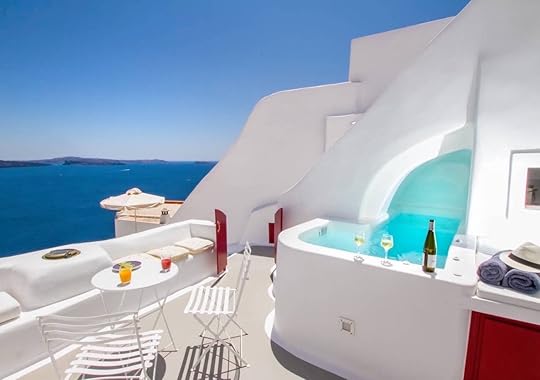
Photo: Airbnb
Since it appears Greece will be open for business this summer, perhaps you should consider attempting to salvage 2020 at this house which was carved into a caldera cave 250 years ago. A one-time wine cellar, it’s now a cozy 645-square foot house with a king bed set up in a loft and a spacious living area complete with fold-out couch. Ideal for a honeymooning couple, it’s also got a private outdoor terrace with a non-heated plunge pool where you can sip wine while enjoying the views of Thirassia Island. The kitchen leaves a little to be desired — you won’t find much past a mini-fridge and a microwave — but with all of Santorini as your backyard, cooking probably wasn’t on the agenda anyway.
The cave house has proven so popular two additional caves have been renovated inside the cliff and are also available for rent. The Hector Luxury Cave and Hector Caldera Nest Room sit off the same path in Oia Village and offer similar experiences if this place is booked.
$596 per night
Wishlisted 254,883 times
2017: White Breeze Apartment in Phuket, Thailand

Photo: Airbnb
Renting a cheap apartment in Thailand doesn’t have to mean sleeping under a ramshackle roof and waiting for the ocean breezes to cool you off. Sometimes it means moving from the air-conditioned comfort of your bedroom to the tranquility of a private swimming pool like you will at this three-apartment villa in Promthep Cape, a short walk from both Ya Nui and Nai Harn beaches. Each private apartment has its own terrace and direct bedroom access to the shared pool, as well as the lush gardens that fill the remainder of the opulent property.
Other amenities include fiber optic internet and ceiling fans in the living room and kitchen, which has a flat range and full refrigerator if you want to make meals to bring to the beach. You’ll also avoid the noise and parties that sometimes accompany private rentals in Phuket, as quiet hours begin at 10:00 PM, and parties and sex tourism are strictly prohibited.
$52 per night
Wishlisted 204,110 times
2016: Everview Suite in Cape Town, South Africa

Photo: Airbnb
In Cape Town’s beachy Camps Bay, you’ll find this appropriately named three-bedroom suite where every room offers a view of something. The master bedroom has a front door that frames Lion’s Head rock, with a king-sized bed looking out onto the ocean. The other bedrooms aren’t bad either, each with views of the water and/or Lion’s Head and the 12 Apostles. Each bedroom also has a private bath with granite shower too, and the suite’s only about 10 minutes’ walk from the beach.
The private terrace has two couches aimed towards the Atlantic Ocean, next to a flat-screen TV and private plunge pool. You’ll also find lawn chairs and pod seats on the adjacent lawn if you want to get some sun while you enjoy the view. Need more space? No problem. Everview has a studio and bungalow which offer additional bedrooms for your big party.
$164 per night
Wishlisted 280,305 times
2015: Balian Treehouse in Bali, Indonesia

Photo: Airbnb
Sometimes the authenticity of an Airbnb just feels better than posting up at a luxury hotel, which you’ll discover at this treehouse overlooking a private turquoise pool and sprawling tropical garden. Were it part of a hotel it would likely cost 10 times the price and feel a little removed from the local culture. Not the case here, where the two-story treehouse’s posting makes it clear that keeping the place sterile is practically impossible and encourages you to stroll into the nearby village and try its home-grown restaurants.
The property itself is stunning, with perfectly manicured gardens and a four-post daybed with curtains to shield the hot sunshine. Near the bed, you’ll find a private veranda ringing the upper level of the treehouse, from which you can survey all the tropical glory below. From downstairs, you can enjoy the A/C and high-speed internet in the bedroom, as well as the flat-screen TV — which boasts “a few channels.”
$92 per night
Wishlisted 271,887 times
2014: Cob Cottage in Mayne Island, British Columbia

Photo: Airbnb
You’ll feel at one with the wilderness of British Columbia while staying in this two-story, one-bedroom cottage that blends in seamlessly with the woodsy surroundings. It looks almost like a mushroom house from a fairy tale but is in fact made of wood native to the area with curved beam ceilings and cantilevered stairs. Your bedroom sits in a loft over the main floor, with a private mini-balcony with direct views into the forest. And the ground floor boasts a kitchenette with mini-fridge, microwave, and loads of counter space.
Outside you’ll find a fire pit with a couple of chairs and a hammock to enjoy during the day or use for evening naps. Though the cottage is remote (it’s about two hours from Vancouver), it still comes with WiFi, since you’ll need something to do once the sun goes down and the fire burns out.
$115 per night
Wishlisted 152,918 times
2013: Seashell House in Isla Mujeres, Mexico

Photo: Airbnb
Local legend tells of a rivalry between the fisherman of Isla Mujeres and Isla Holbox, where the men of Mujeres claimed to have the largest shell in the world and sold it to a gringo after making ceviche for the whole island. That gringo still lives in the shell in a gated community, and tourists stop by on golf carts daily to see what’s going on inside. That last part about the tourists is the only element of this legend that’s true, as the island’s famous shell house was built in the 1990s by architect Eduardo Ocampo as a vacation house for his artist brother. But gringos and non-gringos alike can live here — for a little while anyway — thanks to Airbnb.
The home itself has two bedrooms and two bathrooms spread among two “shells” set by a swimming pool. The upper balcony offers views of the Caribbean and everything inside from the mirrors to the living rooms chairs are either shaped like or made of shells. It’s an odd space that truly gives you as close a feeling as you’ll ever have to being a mollusk, and if you don’t mind tourists popping their heads over the fence to check out your house it’s a quirky, comfortable home for your Mexican getaway.
$299 per night
Wishlisted 235,803 times
2012: Off-grid itHouse in Pioneertown, California
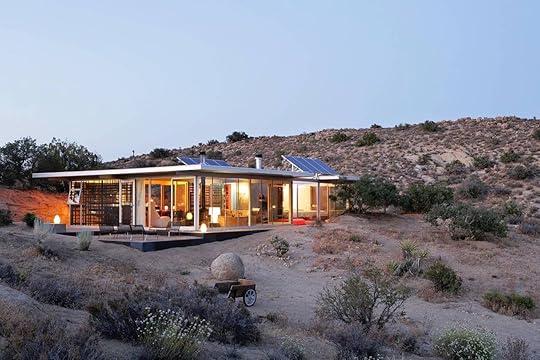
Photo: Airbnb
If you’re looking for a home-base to tour Southern California’s roadside desert oddities, perhaps consider this home the LA Times lauded as one of the best-ever homes in the region. The glass-walled house is a model of sustainability, fueled completely by solar power, with water brought in and heated by the sun and no municipal services. As such, hosts ask that you plan on not having power for part of your stay and prepare your meals using minimal energy.
It’s called the off-grid house for a reason, so don’t expect WiFii or cell service. Though that’s all the better to get out and enjoy the unspoiled desert around you, which beckons through the windows. The views are unparalleled, and the home’s use of light and shadow makes you feel like part of the landscape even when you’re relaxing at home. It has modern style and 21st-century technology while still giving you the feeling of desert pioneers who lived without any kind of connection.
$450 per night
Wishlisted 98.796 times
2011: Villa near Florence, Italy
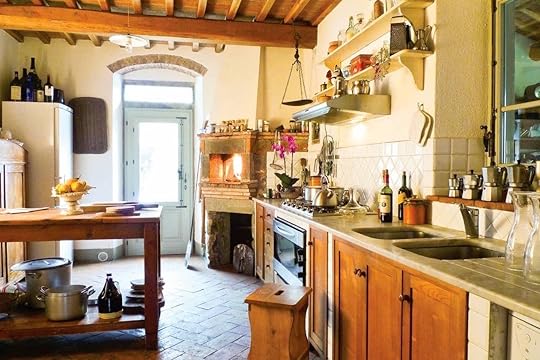
Photo: Airbnb
The decade’s first home to ever top Airbnb’s wishlist was, not surprisingly, a villa in Florence, almost a cliché in the world of aspirational travel. Still, this stone farmhouse in the Chianti hills holds up as a classic property, with olive groves and oak trees leading the way to the seven-bedroom slice of paradise. It’s a popular wedding spot with room for 16 guests, two wood-burning pizza ovens, and an outdoor barbecue. Plus a private outdoor amphitheater ideal for an intimate ceremony.
Outside the home, you’ll find tranquil Italian gardens that seemingly stretch to the hills beyond, as well as a small saltwater pool and oak solarium to soak in the Mediterranean sun. It’s part of a larger property that spans four acres and includes three more private villas. And though it all feels totally secluded, you’re only about 25 miles from Florence if you feel like experiencing some Italian city life as well.
$195 per night
Wishlisted 3,686 times 

More like this: The top 20 trending travel destinations for 2020, according to Airbnb
The post The most wishlisted Airbnbs of the last decade appeared first on Matador Network.
Beer shortage in Mexico during COVID

As the world continues to remain on lockdown due to COVID-19, unexpected consequences continue to arise. In Mexico, for instance, a beer shortage has given rise to a thriving black market.
About a month ago, Mexico decreed that beer breweries are “nonessential” for the duration of the pandemic, reported The Guardian. Bigger brands like Modelo, Corona, and Pacifico are still being brewed, but for export only.
The result is growing unease as the country lurches toward the day when the supply runs out. A government warning that the beer supply at supermarket chains wouldn’t last more than 10 days resulted in panicked customers waiting in long lines to hoard as much beer as they could before it all ran out. A black market has arisen, but prices are twice as high than in pre-pandemic times.
While most people are taking the shortage with a sense of humor (according to The Guardian, the hashtag #LaUltimaChela, “the last beer,” was trending on Twitter) the beer shortage could spell disaster for small, family-owned retailers that depend on beer sales during the summer to stay in business. According to Cuauhtémoc Rivera, director of the National Alliance of Small Merchants, beer makes up about 40 percent of sales for small shops once the weather gets warm.
There is still liquor available in most stores, but what the people really want is beer. The Hustle reported that the average Mexican adult drinks 18 gallons of beer a year. Some desperate beer drinkers have gone on beer runs to nearby Texas, and Facebook groups have even emerged mapping out stores where beer might still be available. But even in shops where there is still beer on the shelves, price gouging has become common practice.
Perhaps I’m just speaking for myself, but until beer brewing gets back to normal, anyone in Mexico should feel free to raid our corner stores and wine shops. There’s plenty of beer to go around and in this time of crisis, Americans should be more than willing to share. 

More like this: Villagers in Germany treated to 2,600 liters of free beer
The post Beer shortage in Mexico leads to panic buying and beer runs to Texas appeared first on Matador Network.
Matador Network's Blog
- Matador Network's profile
- 6 followers



